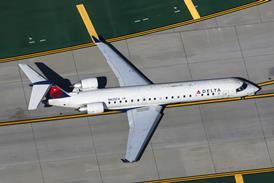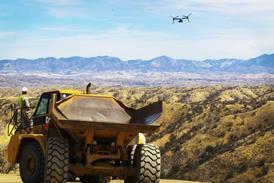JUSTIN WASTNAGE / LONDON
Mexico has the world's third largest business aircraft fleet and also one of the oldest. But a flurry of fleet renewals and tighter regulations is changing that
On the surface, Mexico is a perfect market for business jets: the major business centres are several hundred kilometres apart; commercial air transport is crowded and expensive; and there is a desire among Mexico's elite to travel in greater security. Furthermore, the country's proximity to the USA and extensive trade links have created a business community educated in the benefits of corporate aviation. Yet scratch a little deeper and you discover a large factor against corporate aviation: Mexico's economy is only one-quarter the size of its northern neighbour.
The result of these competing factors is that Mexico's business aviation fleet ranks third only behind the USA and Brazil, but the aircraft are old. Business aviation analyst Amstat calculates there are 647 corporate jets and turboprops in Mexico, but that the average age of the aircraft is 23 years. Until recently most of them were retired US aircraft, making Mexico City's business aviation airport Toluca the unofficial "world capital of used aircraft".
Fabio Rebello, Bombardier's regional vice president of sales for Latin America, says the situation is changing. Five years ago, "almost all" aircraft sold in Mexico were used, compared to around only 65% now, says Réné Garza, president of Bombardier's Mexican sales agent JetMach. There is a growing sophistication in the market, with customers demanding high-specification new aircraft with complex financing arrangements, says Rebello. There are many reasons for this change, some economic, some environmental, but all manufacturers, meeting this week at Toluca for the Aero Expo 03 air show, are reporting a general trend towards a large-scale fleet renewal.
A prime motivator behind this mass upgrade is a more stringent regulatory regime being brought in by the Mexican civil aviation authority, the DGAC. Its first move in January 1999 was to insist on a US Federal Aviation Administration-issued export certificate of airworthiness for all used aircraft. Next is its phased move towards harmonising aviation requirements with the FAA, and both measures should reduce older types flying in the country. The DGAC has mandated that ground proximity warning systems be installed and traffic collision avoidance system be upgraded to TCAS II by the end of 2004. Mexico is also to introduce its reduced airspace vertical separation minima (RVSM) in line with a US move which is scheduled for 2005.
Mexico now has slightly fewer than 400 jets in operation, according to Flight International's last corporate aircraft census (Flight International, 3-9 September 2002). Ray Santa, Bombardier's pre-owned aircraft sales director for Latin America, estimates that around 65% of these will need updating to meet the new requirements. Learjet 25 operators in Europe, for example, found the cost of RVSM compliance too onerous and chose instead to replace their aircraft, a trend that Santa expects to follow in Mexico. "Operators of the oldest types will find it uneconomic to update their aircraft to meet the new requirements and replace their aircraft instead," he says, adding that sales of newer pre-owned aircraft could increase by 30% over the next two years as a result of the new regulations.
Boom to bust
The race towards aircraft ownership began in the mid-1990s, says Roberto Zambrano Villarreal, sub-director general of the Desarrollo holding company, which owns one of the largest corporate fleets in the country. "Mexico was experiencing a boom and every company wanted its own aircraft and often just bought the cheapest, which led to a huge influx of old US aircraft, just in time for the economy to crash," he says.
Thanks in part to the North American Free Trade Area (NAFTA), Mexico has recovered from that sharp downturn. The free flow of goods from cheap production facilities in Mexico to the markets of "El Norte" has transformed Mexico into one of Latin America's most stable economies over the past five years and, despite the US slowdown, growth of around 2.2% is predicted this year. The need for longer-range business jets reflects NAFTA's growing importance, with Bombardier the market leader in new jet sales in the country. Rebello says that the demand is chiefly for the mid-sized Learjet 60 and the large Challenger 604. Unfortunately, says Rebello, the economy is now being affected by the US downturn, with Mexican companies, many of which have facilities north of the border, stalling acquisition of new aircraft.
Bombardier still sees encouragement in the trend towards the acquisition of new aircraft, and Amstat figures show that of 54 retail sales in 2002, only 35 came from the USA, with Canadian aircraft taking the lion's share of the non-US figure.
The growing sophistication of Mexican customers and their demand for newer aircraft brings a concentration on operating costs as much as the cost of acquisition, says Rebello. Adrián Zambrano Yturria, president of Pilatus dealer PC-12 Center de México says: "People who are buying a King Air or a Cheyenne because they are cheap are living in a false economy. The money they spend on operating costs could be used as a deposit on a new aircraft."
The trend towards efficiency is also leading to more outsourcing. The DGAC has been issuing new FAA-harmonised air operators' certificates (AOC) for several weeks, after years of delay. The red tape involved could prompt several in-house operators to contract the running of their fleets to third parties. Zambrano Villarreal, who last year transferred the six-aircraft fleet of Mexican cement giant Ceméx to the Swiss aircraft management company Execujet, predicts a growing willingness to accept the hands-off approach in return for cost savings.
Most business aircraft on the Mexican register are operated by owners' in-house flight departments. Amstat records 305 operators in Mexico today, a number that Zambrano Villareal thinks will fall to around 35 as flight departments realise the complexity and cost involved in meeting the new AOC rules and instead use management companies.
Aerolíneas Ejecutivas (ALE), the country's largest business jet operator, concurs. ALE is seeing a growing market for charter from its base at Toluca, where companies would previously leave their aircraft dormant on the apron when not in use. Guillermo Villanueva, operations manager at ALE, says the company last year flew 700h more than expected and its fleet of 25 managed aircraft eclipsed its own 20 Hawker 800s and Beechjets for the first time. ALE's managed fleet is to grow by six aircraft this year as Mexico City-based companies consider the operating economics. "People are renewing their fleets after 4,000-5,000h and relegating older types to secondary missions," he says.
ALE, with Raytheon, is also pushing fractional ownership in Mexico through MéxJet. The first such scheme in Mexico uses Beechjet 400As and Hawker 800XPs from ALE's managed fleet in a block charter programme from Toluca. The idea is that, as the programme gathers momentum, true fractional ownership could be launched, possibly in conjunction with US operator Flight Options. ALE hopes to see the migration of operators of old types to the scheme, which allocates one aircraft for around 10 owners.
Fractional ownership
The move towards such programmes represents a shift in perception of business jets from a status symbol to a business tool, similar to the shift that began in the USA a decade ago. Yet the change cannot happen without a cut in the bureaucracy involved in operating a business jet in the country, says Femppa, the Mexican aircraft owners' and pilots' association.
The association has so far lobbied for several changes in this direction. For example, landing fees, previously payable only in cash at banks, are to be levied in local currency by airports; a 15% sales tax on aircraft operated by individuals is being reconsidered by the authorities to avoid abuse of the civil AOC register; and local banks are taking on the risk of aircraft financing, a process usually organised by international lenders.
At the same time, the Baja Bush Pilots, a Chandler, Arizona-based association of US private pilots, has worked with Mexican authorities to distil the country's flying regulations into a 24-page English language booklet.
Other obstacles are more permanent. Toluca Airport is visited by almost every business aircraft in the country and is home to around 40% of the Mexican fleet. But at an elevation of around 8,500 ft (2,600m) and with temperatures varying between 0°C (-32°F) and 40°C, the airport represents a natural challenge to aircraft manufacturers, who use it as a proving station. Like Mexican business aviation itself, operators have learned to operate in Toluca's harsh conditions and look forward to prospering.
Source: Flight International























